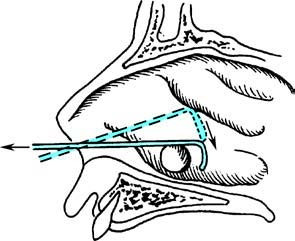Foreign bodies in the nasal cavity and sinuses can be classified into endogenous and exogenous types. Endogenous foreign bodies include dead bone and crusts. Exogenous foreign bodies can be plant-based, animal-based, or non-biological. Non-biological foreign bodies are often caused by external trauma and include shrapnel, small stones, and wooden fragments. These types of foreign bodies tend to cause significant damage and result in more complex conditions. This condition occurs more frequently in children, but the incidence in adults is also relatively high, particularly when caused by trauma.
Etiology
Children frequently insert objects such as beans, fruit pits, rolls of paper, or button batteries into their nostrils during play.
Leeches and insects may crawl into the nasal cavity during outdoor activities, such as sleeping in the open or swimming in natural settings, particularly in tropical regions.
During various trauma events, fragments of stones, wood, or shrapnel may be introduced into the nasal cavity, sinuses, orbit, pterygopalatine fossa, or even the cranial cavity.
Endogenous foreign bodies include dead bone, dried crusts, caseous secretions, or other materials retained in the nasal cavity due to disease. Iatrogenic foreign bodies, such as retained gauze or broken pieces of instruments, can occasionally be left in the nasal cavity or sinuses.
Pathology
The retention of foreign bodies can cause secondary infections of the nasal or sinus mucosa, leading to nasosinusitis and even osteomyelitis. Prolonged retention of foreign bodies allows inflammatory exudate to gradually evaporate and concentrate, depositing various inorganic salts on the foreign body’s surface. This process forms an encrusted structure around the foreign body, known as a "rhinolith." The composition of rhinoliths includes salts such as calcium, phosphorus, magnesium, and sodium chloride, which may give the rhinolith yellow, gray, brown, or green coloration depending on the specific components.
Clinical Presentation
Symptoms vary depending on the nature, size, shape, location, irritative properties, and duration of the foreign body in the nasal cavity or sinuses.
In children, nasal foreign bodies often manifest as unilateral nasal obstruction, purulent nasal discharge, epistaxis, or foul-smelling odor from the nasal cavity.
Foreign bodies like stones, wooden fragments, and rusted materials often carry soil and may lead to tetanus.
Button batteries have a high risk of causing nasal septum perforation and bleeding due to their compressive and chemical effects.
Trauma-induced foreign bodies are associated with a history of facial trauma and corresponding clinical signs.
Living animal-based foreign bodies, such as insects or leeches, often cause sensations of movement within the nasal cavity.
Iatrogenic foreign bodies are linked to a history of surgery or medical intervention and may present with nasal obstruction, foul-smelling purulent discharge, and headache on the affected side.
Diagnosis
Diagnosis is typically straightforward based on medical history and clinical manifestations. In children presenting with unilateral nasal obstruction, purulent or bloody nasal discharge, and a foul odor, nasal foreign bodies should be strongly suspected. Examination with anterior rhinoscopy or nasal endoscopy often reveals the presence of the foreign body. In cases where the foreign body has been retained for a long time and granulation tissue has formed, probing may assist in diagnosis. For unclear cases with suspected nasal or sinus foreign bodies, CT imaging can be performed.
Treatment
The method of removal depends on the size, shape, location, and nature of the foreign body.
Nasal foreign bodies in children are often removed using instruments with a hook or loop end under endoscopic guidance. The instrument is introduced through the anterior nostril, maneuvered around the foreign body, and used to pull it forward. No forceps should be used, especially for smooth foreign bodies, as this may carry the risk of pushing the object toward the posterior nasal cavity or nasopharynx, potentially leading to accidental aspiration into the larynx or trachea.

Figure 1 Method for hooking out a round foreign body from the nasal cavity
Living animal-based foreign bodies require surface anesthesia before removal with nasal forceps.
For button batteries, examination for leakage, nasal septum erosion, or perforation is necessary, along with timely irrigation and wound cleaning. Post-procedure follow-up is essential to monitor for delayed nasal septum perforation.
Patients with a history of trauma should receive prophylaxis for tetanus.
For sinus foreign bodies, endoscopic sinus surgery is typically required to open the sinus and remove the foreign body. Preoperative evaluation is necessary to determine the relationship between the foreign body and adjacent blood vessels or critical structures to avoid complications. Postoperative care involves infection prevention and regular follow-up examinations.